Before Buying a New Home
Thinking of buying a new home? We've got the information you need to get started.
Buying a home is a major decision that involves careful considerations. Before making any purchase, there are a few steps you need to take in order to assess what type of home makes sense for you and your family. One of the first questions you should ask yourself is whether you want a new home or an existing one. Both have their advantages and disadvantages.
A New Home – or an Existing One?
About 25% of all homes purchased each year are newly built, while the remaining 75% are resales of existing homes. Which is best for you? As the Canadian Home Builders’ Association, we obviously have a bias for new homes, but you need to make the choice that makes the most sense for you and your family. (And if you buy a resale home, remember that our professional renovator members can help you make any changes you want.)
There are a number of differences between buying a new and resale home. Here’s our perspective on the advantages that a newly-built home can provide to you:
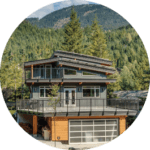
CHOICE
You choose the builder
When you buy a brand new home, you get to choose your builder based on their reputation and track record. Professional new home builders are proud of their work, skilled, experienced and committed to your satisfaction.
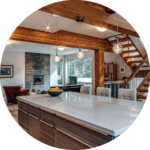
COMFORT
Up-to-Date
Today’s homes meet more stringent building codes and provide a quality of construction that is higher and more demanding than in the past. A new home meets today’s standards for energy efficiency, safety and performance. From construction materials to heating systems, the technology built into every new home ensures your long-term satisfaction.
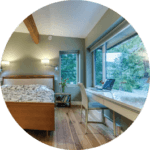
COMMUNITY
Well-designed places to live
New developments are designed to foster a spirit of neighbourliness by carefully balancing private and public areas. They include welcoming home designs, green recreational areas, playgrounds for children, safe and attractive roads and pathways, and many other features.
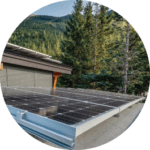
CONFIDENCE
You know what you’re getting
With a new home, you don’t have to worry about maintenance and repair costs for many, many years, because everything is brand new and covered by warranty. Resale homes come with uncertainty about the timing and costs of repair or replacement, from roofing to heating and plumbing.
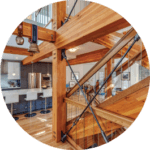
PERSONALIZATION
Make it yours
From floor plans to features and finishes, when you buy a new home you get choices not available on the resale market. Depending on the type of new home you buy, your builder will work with you to select the right details to make your home truly yours.
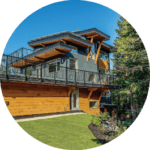
WARRANTY
Piece of Mind
One of the great advantages of buying a brand new home is the warranty that comes with it. Professional builders stand behind their work with an after-sales service program and a guaranteed third-party warranty.
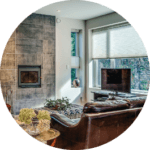
DESIGN
A fresh space to call your own
Today's new homes combine function and style, with open, inviting living areas, lots of light, well-planned work spaces and built-in convenience. Light, bright and fresh feeling.
Planning for What You Need – and Want
When you buy a home, it’s important to think both short- and longer-term. Ideally, you want to buy a home that meets your needs for the next 5 to 10 years, or one with spaces that can adapt with your needs. Here are some things to consider.
Size
- How many bedrooms do you need?
- How many bathrooms do you need?
- Do you need space for a home office?
- What sort of common living space will best suit your family and lifestyle (e.g., living/family rooms, outside spaces, etc.)
- What kind of parking facilities do you need? For how many cars?
Special features
- Do you have family members with special needs that require a specific floor plan (e.g., ground-floor bedroom, or wheelchair/walker accessible bathroom and kitchen)?
- What are your storage or hobby space needs?
- Is a fireplace or a swimming pool high on your list?
- Do you want special features to save energy, enhance indoor air quality, and reduce environmental impact?
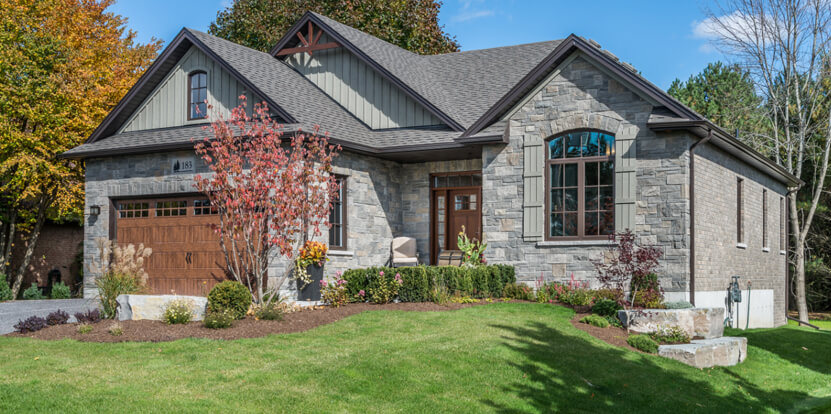
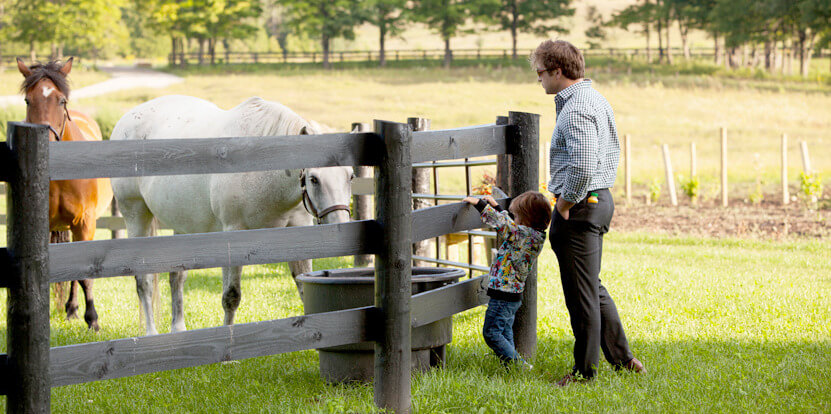
Lifestyles and Life Stages
It’s important to have a clear idea of your needs today and in the future. Here are some of the things you should consider:
- Do you need a home office?
- If you have children, how will their needs change in the coming years?
- If you don’t have children, do you plan to start a family?
- If you have teenagers, will they be moving away to college or university soon?
- Are you close to retirement?
- As you get older, do you plan on staying in your home, and if so, how will your needs change?
- Do you have an older relative/parent who might come to live with you at some point?
You can use CMHC's downloadable Home Features Checklist to help you think about and record what you need today, and what you may need in the future.
Location
Location is important. A great home in the wrong location is probably not the right home for you. Here are some things to consider:
- What sort of neighbourhood do you want to live in? Downtown, suburban or rural? A new community or an older one?
- Where do you work, and how will you travel between your home and workplace? If you plan on car commuting, what length of commute is acceptable? If you plan on using transit, what transit routes make sense for your commute? And if you will be a commuter, what travel time and cost do you need to plan on?
- If you have children or plan on starting a family, where will your children go to school? How will they get there? If you require childcare, what is available in the communities or neighbourhoods you are interested in?
- What recreational facilities are you looking for in terms of bike paths, parks and community centres?
- How close would you like to be to family and friends?
As you begin to look at homes and communities, make use of our Home Summary Worksheet to keep track of what each home offers you.
Types of Home Ownership
When it comes to buying a new home, it's important to consider the different types of ownership and types of homes available. The type of ownership you choose will determine the amount of responsibility you have for your property, while the type of home you choose will determine the lifestyle you'll have.
Freehold
Freehold ownership means that you own the land and house outright, with no space co-owned or co-managed with owners of adjacent homes. You are also solely responsible for the maintenance and upkeep of your property, and the property taxes associated with it.
Detached and semi-detached homes, duplexes and townhouses are usually owned freehold.
Condominium
(called “Strata” in the province of British Columbia)
Condominium ownership means you own the individual unit you live in, and share in the ownership of common spaces. Common spaces can be within the building (e.g. corridors and foyers), the grounds around the building, and any shared amenities (e.g. swimming pools, recreation rooms).
You are responsible of the upkeep of your unit, including property taxes, and pay a monthly “condo fee” towards the costs of maintaining common spaces and amenities.
You and the other owners of units within your building manage the common areas through an owners’ association. The association makes decisions about using and maintaining the common space, and sets your condo fees.
Types of Homes
When it comes to types of homes, there are many options to choose from. Single-family homes are the most traditional type of home, and offer more privacy and space than other types of homes. Townhouses, on the other hand, are often more affordable and offer a sense of community. Condos are a popular choice for those who want the benefits of homeownership without the maintenance that comes with a single-family home.
Ultimately, the type of ownership and type of home you choose will depend on your personal preferences and lifestyle. It's important to do your research and weigh the pros and cons of each option before making a decision.
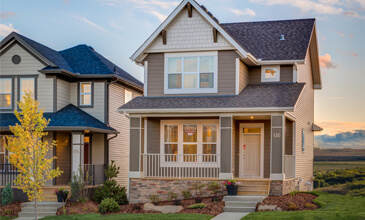
Single-family Detached
A single-family detached home is one dwelling unit that stands alone, on its own lot. These are normally freehold.
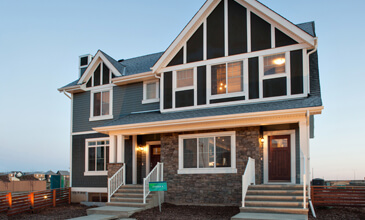
Single-family Semi-detached
A semi-detached home is a single-family home that is joined on one side to another home. It can offer many of the advantages of a single-family detached home but is usually somewhat less expensive to buy and maintain. These are normally freehold.
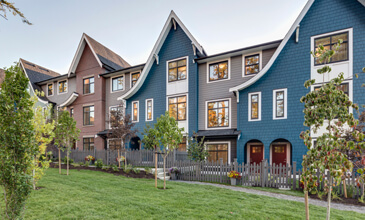
Row House (Townhome or Townhouse)
Row houses (also called townhomes or townhouses) consist of several similar single-family homes, side-by-side, joined by common walls. They can be freehold or condominiums. They offer less privacy than a single-family detached home, although each usually has a private outdoor space. These homes come in a wide range of sizes, configurations and price points.
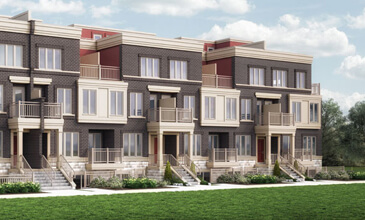
Stacked Townhome
"Stacked towns" are usually two-storey homes stacked one on top of the other. The buildings are usually attached in groups of four or more. Each unit has direct access from the outside. They are usually condominiums.

Net Zero Home
A Net Zero Home produces as much energy as it consumes and is up to 80% more energy efficient than a home built to conventional standards. Every part of the house works together to provide consistent temperatures throughout, prevent drafts, and filter indoor air to reduce dust and allergens. The result: exceptional energy performance and the ultimate in comfort – a home at the forefront of sustainability. Any of the above types of homes could also be a Net Zero Home. Learn more here.
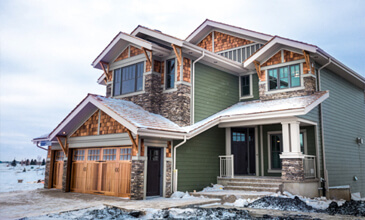
Modular Home
Modular homes are built inside factories in climate-controlled conditions and delivered in sections (or modules) to the homebuyer's site for completion. Any of the above types of homes could also be modular homes.

Condominium (Strata) Apartment
A self-contained housing unit located in a building that includes other similar condominium units. Condo apartments are built in a wide range of sizes, from bachelor units to multi-bedroom suites. Each condo apartment includes its own kitchen and bathroom facilities, and often has its own heating and air conditioning system.
Learn About Your New Community
New homes also involve a new community, and you should take the time to learn about this.
What we look for in a community can vary a great deal, depending on both our lifestyle and life stage. The downtown high-rise condo that is perfect for young professionals or mature adults may not suit young families. Conversely, suburban communities that are great for families may not offer what singles and retirees are looking for. There’s no ‘right or wrong’ community, just the one that’s right for you.
Today, new developments are most often planned communities that range from large-scale developments with hundreds of homes to private enclaves of less than 50 homes, to downtown condo towers. The ideal "community" is a very personal thing that varies from person to person.
It is important to have realistic expectations and to know what you’re looking for before you buy into it. As you visit builders' sales offices and model homes or suites, ask about the community at the same time.
Who is the Target Market?
Ask the builder or salesperson to describe the community and the homeowners it is designed for. Inquire about the mixture of homes in terms of size, styles and price range, and ask for a profile of people who have bought to date—who lives there? Some communities, notably those aimed at mature adults and seniors, may also set criteria for who can buy there.
What Common Facilities and Community Amenities are Planned?
Builders and developers put a great deal of effort into planning a community that will work well for the intended residents. In a neighbourhood development, common facilities like parks and community centres are part of their plan. In condominiums a wide range of common amenities can be includes, from health clubs, to pools, to party rooms. Ask what is planned for the community or condominium development you are looking at.
What Ongoing Services Will be Offered?
Services provided to individual homeowners by communities vary greatly, so be sure to ask for detailed information, including costs. In condominium developments, security and most maintenance of areas outside of your living unit will be professionally managed. In some neighbourhood developments services such as gardening and snow removal are sometimes mandatory to keep the community attractive and safe. Seniors' developments may include health and recreational services. Make sure you know what fees or costs are associated with the services provided.

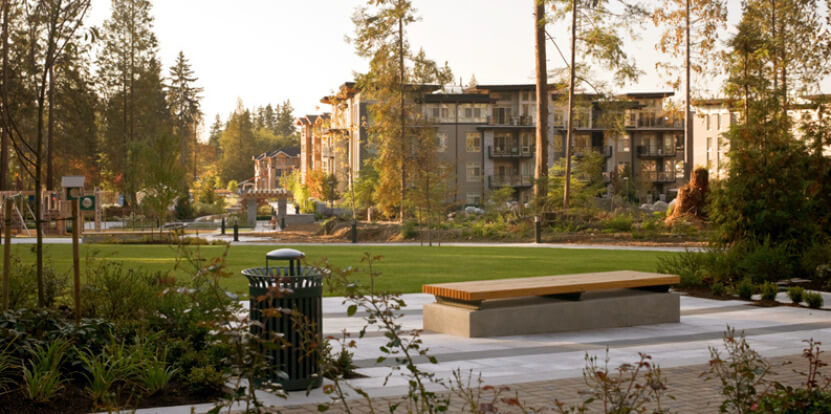
Ask to See the Complete Community Plan
People make a community work, and the layout and design of a new community will affect how residents interact, and your daily routine. Look for narrow or curved streets to slow down traffic, and sidewalks and pathways for pedestrians and bicycles for getting around the development easily and safely. Check if shops and service areas are within walking distance, and note the location of schools, access to transportation and connections to other parts of the city or area.
Connect the Community to Your Workplace
Options for getting to and from your workplace should be understood. If you plan to commute by car, it can be a good idea to drive your commute route at rush hour to get a sense of the time involved. If you plan on using transit, find out about schedules and routes that will work for you.
Talk to the People in Your Prospective Community
Nothing beats talking with the neighbours to learn about a prospective community. If the development is already partially built and lived in, walk around to get a feeling for the community. Stop to chat with people on the street, or try knocking on somebody's door to ask a few questions. Most people won't mind, and it can greatly help you to decide if this is the right community for you.
